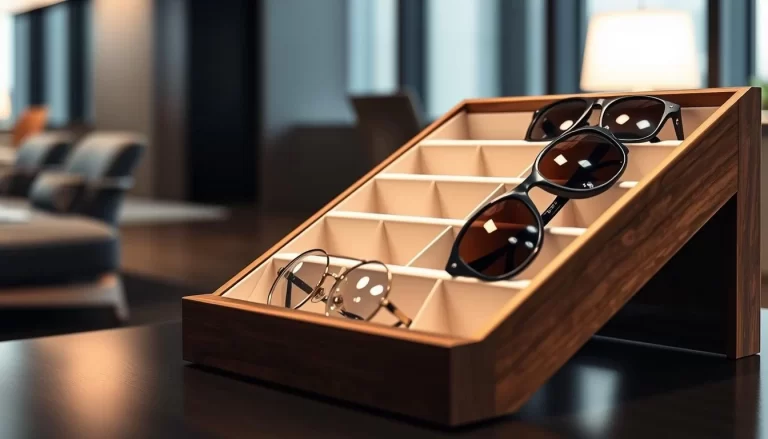When it comes to choosing between acrylic and glass shelves, one of the most important factors to consider is their weight capacity. Both materials have their own strengths and weaknesses, and understanding their load-bearing capabilities can help you make an informed decision. In this guide, we will compare the weight capacity of acrylic and glass shelves, discuss the factors that affect their performance, and provide some key takeaways to help you choose the right material for your project.
Key Takeaways
-
Acrylic shelves are generally lighter than glass shelves but have a lower weight capacity.
-
Glass shelves are heavier but can support more weight than acrylic shelves.
-
The weight capacity of both materials depends on factors such as thickness, size, and support structure.
-
Acrylic shelves are more impact-resistant and less likely to shatter than glass shelves.
Factors Affecting Weight Capacity
1. Material Properties
Acrylic and glass have different material properties that affect their weight capacity. Acrylic is a lightweight plastic material that is less dense than glass. This makes acrylic shelves easier to handle and install, but it also means that they have a lower weight capacity compared to glass shelves of the same size and thickness. Glass, on the other hand, is heavier and denser than acrylic, which gives it a higher weight capacity but also makes it more difficult to handle and install.
2. Thickness
The thickness of the shelf material plays a crucial role in determining its weight capacity. Thicker shelves are generally stronger and can support more weight than thinner shelves. For
acrylic shelves, a thickness of 1/4 inch (6mm) is commonly used for general-purpose applications, while thicker options like 3/8 inch (9.5mm) or 1/2 inch (12mm) are available for heavier loads. For glass shelves, a thickness of 1/4 inch (6mm) is also common, but thicker options like 3/8 inch (9.5mm) or 1/2 inch (12mm) are available for heavier loads.
3. Size and Span
The size and span of the shelf also affect its weight capacity. Larger shelves or those with a longer span between supports may require thicker material to support the same weight as smaller shelves or those with shorter spans. This is because the weight is distributed over a larger area, which can cause the shelf to sag or break if it is not thick enough.
4. Support Structure
The type of support structure used for the shelf can also impact its weight capacity. Shelves that are supported by brackets or other structures that provide more support may be able to hold more weight than those that are supported by less robust structures. Additionally, the spacing between supports can also affect the weight capacity, with closer spacing providing more support and allowing for a higher weight capacity.
Weight Capacity Comparison
| Material |
Thickness |
Weight Capacity (lbs) |
Weight (lbs/ft²) |
| Acrylic |
1/8 inch (3mm) |
20-30 |
1.5 |
| Acrylic |
1/4 inch (6mm) |
50-70 |
3.0 |
| Acrylic |
3/8 inch (9.5mm) |
100-150 |
4.5 |
| Acrylic |
1/2 inch (12mm) |
200-300 |
6.0 |
| Glass |
1/8 inch (3mm) |
30-40 |
4.0 |
| Glass |
1/4 inch (6mm) |
80-100 |
8.0 |
| Glass |
3/8 inch (9.5mm) |
150-200 |
12.0 |
| Glass |
1/2 inch (12mm) |
300-400 |
16.0 |
Key Points to Consider
-
Lightweight: Acrylic shelves are much lighter than glass shelves, making them easier to handle and install.
-
Impact-Resistant: Acrylic is more impact-resistant than glass and is less likely to shatter if it breaks.
-
Lower Weight Capacity: Acrylic shelves have a lower weight capacity compared to glass shelves of the same size and thickness.
-
Versatile: Acrylic can be easily cut, shaped, and customized to fit your specific needs.
2. Glass Shelves
-
Heavy: Glass shelves are heavier than acrylic shelves, which can make them more difficult to handle and install.
-
Higher Weight Capacity: Glass shelves have a higher weight capacity compared to acrylic shelves of the same size and thickness.
-
Less Impact-Resistant: Glass is more brittle than acrylic and is more likely to shatter if it breaks.
-
Timeless Aesthetic: Glass has a timeless aesthetic that can add a touch of elegance to any space.
1. Which material is better for heavy loads?
For heavy loads, glass shelves are generally the better choice due to their higher weight capacity. However, acrylic shelves can also be used for heavy loads if they are thick enough and properly supported.
Yes, acrylic shelves are safe to use and are often preferred in high-traffic areas or where safety is a concern due to their impact resistance. If an acrylic shelf does break, it is less likely to shatter into sharp pieces than glass.
Acrylic shelves can be used outdoors, but they may be more prone to yellowing or discoloration over time due to exposure to sunlight. UV-resistant acrylic sheets are available, which can help prevent this issue.
4. How do I clean acrylic and glass shelves?
Acrylic shelves should be cleaned with a soft cloth and a mild cleaner to avoid scratching the surface. Glass shelves can be cleaned with glass cleaner and a cloth or paper towel.
5. Which material is more cost-effective?
Acrylic shelves are generally more cost-effective than glass shelves, especially for custom sizes or shapes. Glass shelves can be more expensive due to the cost of cutting and shaping the material.
Conclusion
When choosing between acrylic and glass shelves, it is important to consider the weight capacity, material properties, and your specific needs. Acrylic shelves are a lightweight and versatile option that is ideal for general-purpose applications, while glass shelves offer a higher weight capacity and a timeless aesthetic. By considering the factors discussed in this guide, you can make an informed decision and choose the right material for your project.







